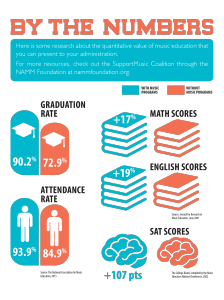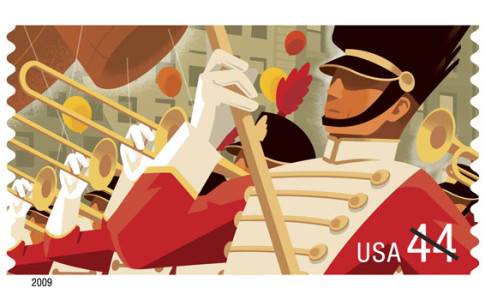Find out how to work with your building staff and district administrators to build the brand of your band.
Music programs are often isolated from the rest of the school, both by choice and by force of habit. But this can end up hurting the program in the long run. So how can you, as a music educator, build meaningful relationships and instill the value of your program within your school, the district, and beyond?
See the Administrators’ Viewpoint
It’s easy for music educators to get stuck in a bubble and only think about their specific department. But while music educators can choose to focus solely upon their students and program, school administrators don’t have such a luxury. Their concerns are on a much larger scale, and as a music educator, it’s important for you to understand where they’re coming from.
The primary goal of school administrators is to find teachers and programs that will provide students with meaningful learning experiences. “Good administrators realize that the arts, music in particular, enhance a kid’s educational experience in ways that perhaps the four core areas of math, science, social studies, and English cannot,” says Dr. Chris Small, a recently retired superintendent from Calhoun (Missouri) R-VIII Schools.
Yet administrators care not only about how effective an educator will be as a teacher; they also care about how they’ll fit into the school as a whole. “[Administrators] are less concerned about the program and more concerned about how that particular teacher will fit into the existing environment,” says Wayne Bliss, a now-retired music educator and full-time musician.
“They want someone who will be a positive contribution to the climate of the school.”
Additionally, administrators are increasingly viewing their schools’ music programs, especially the marching programs, as a public relations asset. “Good administrators view that program as a wonderful PR tool, not only for the community but also for the district as a whole.”
Marching bands are consistently out in the community, performing for audiences that may otherwise be unaware of the school. When people think of a marching band, they don’t normally use its proper name, but rather the associated school’s name.
“The marching band can be a great way of communicating the really great things that are happening in your school,” says Marcia Neel, president of Music Education Consultants.
In some instances, this is all that the administration initially expects of a music program. “[The administrators] want the band there for important events, and then beyond that, they can be left to whatever they want to do,” Bliss says.
 Build Relationships
Build Relationships
At one point or another, a music educator will be required to deal with the administration on an unsavory issue, and it’s important that when this happens, it’s not your first point of contact with these individuals. Thus, music educators should focus on building solid, lasting relationships with administrators early on. “The one thing that we as music educators and parents want to do is that we want to create a good relationship with our supervisors and administrators before an issue comes up,” Neel says.
Communication is key to a healthy relationship with your administration. To ensure the principal remains aware of your program, Neel suggests the use of a Performance Request Form. This form should include the performance event, the donation amount (if applicable), and any other pertinent information. The music educator should then sign the form and send it to the principal. The purpose of this form is to ensure the administration understands that your program is out in the community and being a good ambassador for the school.
Yet building a relationship with administrators doesn’t always require such a rigid structure. Taking an office staff member out for coffee, letting the principal conduct at a concert, or giving an administrator an award at the band banquet are all effective tools music educators can utilize to build a strong relationship.
According to Neel, the simple things often make the biggest impact. “Even if you have one kid who’s making incredible improvements, it’s important for you to send a quick email to your supervisor to let them know that so-and-so has made a turnaround in the program,” she says.
Through small acts such as these, administrators can more accurately understand the value of your program and will be more apt to help you when the need arises.
Advocacy is also key to the success of your program. Administrators are interested in the big picture and focus upon ensuring the continued success of their students after they move into the real world. As a result, the use of statistics and factual evidence in support of music education and marching programs is useful in assuring administrators that your program is an investment that is worthy of their support.
“Everyone agrees that music is a beautiful thing unto itself, but administrators may not support the music program if the arguments are music-centric,” says Larry Livingston, chair of the University of Southern California Thornton School of Music’s conducting department. “It is important then to show the evidence of countless test results which demonstrate that music does improve neurological function, increases graduation rates, boosts SAT scores and grades.”
Remember that the administration consists of more than just the principal. The office staff, teachers, and even the custodial staff all play a role in the success of your program. After all, you’ll be left in a lurch if your students’ other teachers won’t let them out of class for a dress rehearsal or performance. Similarly, if the custodial staff won’t help your students gain access to their instruments after hours, so they can practice at home, the musicality of your program will surely suffer. Thus, music teachers must work to build relationships with everybody, not just those they expect to work with on a regular basis.
Music educators must also remember that, in many instances, their school’s administrators participated in their own schools’ music programs as children. While they may not remember some of the finer points, they will likely remember the effect music played on them. If this is the case, music educators should foster their interest in the program, which can be achieved by having them sit in with the students for a rehearsal, having a casual after-school “reading band,” or letting them announce the program at a concert.
Make Your Program Visible
It’s tempting to focus solely upon what you, as a music program, are accomplishing. But “you have to be careful to not just lock yourself up in the music room,” says Michael Butera, the executive director and CEO of the National Association for Music Education.
Participating in special events held by the school and greater area is a fantastic way to increase visibility and be an active part of the community. For instance, Small recalls a high school that raised funds each fall not only for its own music program but also to adopt low-income families for the holidays. This activity makes the band program a visible asset to the community and acts as a positive public relations tool for the school; it also reinforces an important lesson—that of caring for those less fortunate, which educators should be dedicated to instilling in their students anyway.
“Band produces great citizens,” says Small who knows first-hand about the marching arts as a former band director himself. “If that’s our legacy, then we’ve done a good job.”
Voice Your Needs
A common problem faced by music educators is that administrators don’t truly understand what the program is trying to accomplish. “Administrators don’t understand instrumentation,” Bliss says.
Butera agrees.
“Not everybody understands music; you have to help them understand it.”
A unique way to make your program’s needs clear and measurable is through the development of a five-year plan. Not only should this plan include the costs of buying new instruments and repairing existing instruments, it should also account for expected growths within the program and yearly costs such as marching staff salaries.
According to Neel, the key to convincing the principal of the efficacy of the plan is having it focused solely upon the students. “It can’t be about what you [as a music educator] want; it should only be about what you need for the students to be successful,” she says.
With or without a five-year plan, music educators must have a clear vision in mind of what they want their program to achieve that they can then communicate to the administration. “If you don’t understand, you can’t support, so I think it’s very critical that the band director and the whole marching staff really consistently communicate what the vision [of the program] is,” Small says.
Once administrators understand why your program is so important, they’ll be advocates in the future. “If that person is on board, then they’re going to sell the program as well,” Small adds.
Every Student Succeeds Act
On Dec. 10, President Obama signed the Every Student Succeeds Act (ESSA) into law, replacing the previous administration’s No Child Left Behind Act. The new law attempts to fix what was commonly perceived as a flawed “one-size-fits-all” approach by providing more flexibility for individual states to structure their school improvement plans and reducing the burden that standardized testing places upon teachers and students alike.
While ESSA will affect all aspects of education, it’s a particularly groundbreaking piece of legislation for music education. Unlike the past, music is now cited as a core element in a well-rounded education.
“This is a landmark decision in the history of music education,” says Larry Livingston, chair of the University of Southern California Thornton School of Music’s conducting department.
Yet while ESSA will provide a legally supportive framework for music programs in public schools, music educators should not bypass building a solid relationship with the community while focusing solely upon their ensembles. Indeed, music teachers must continue to work with their administrations and the community to build a strong brand for their music programs.
While the long-term effects of ESSA may not be known as of now, the future of music education is bright. “We know all the research of what music does, but in the end, the value of an arts program is that it’s a life-fulfilling experience; it makes your life better,” says Marcia Neel, president of Music Education Consultants. “And as a result of good advocacy and good communication … programs are staying in place.”


